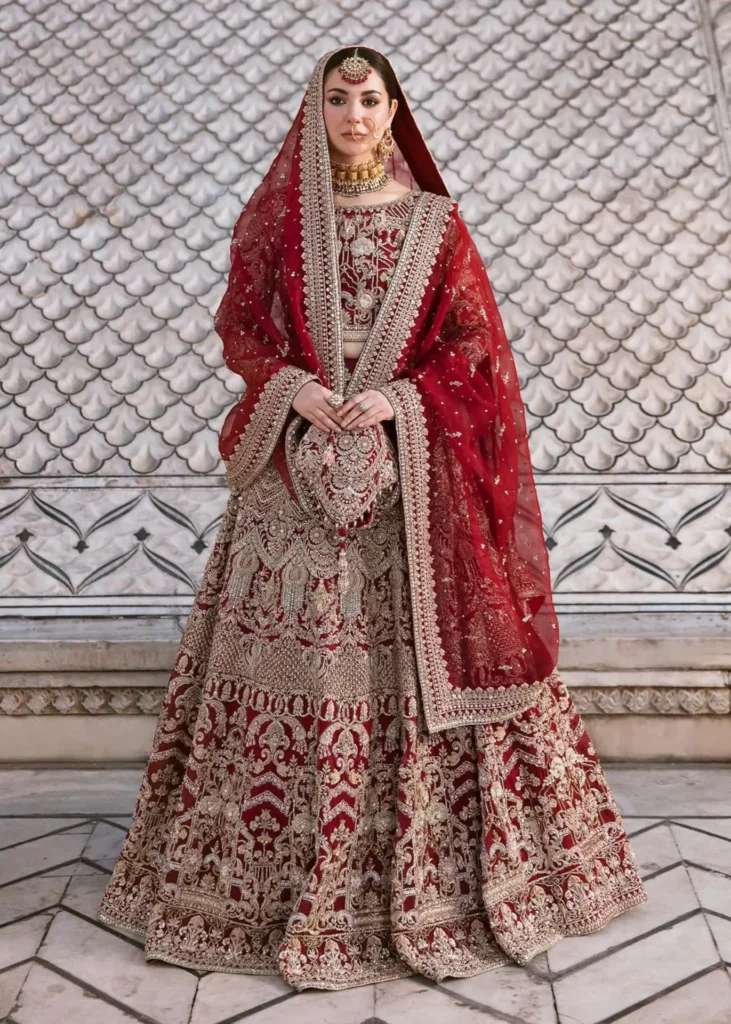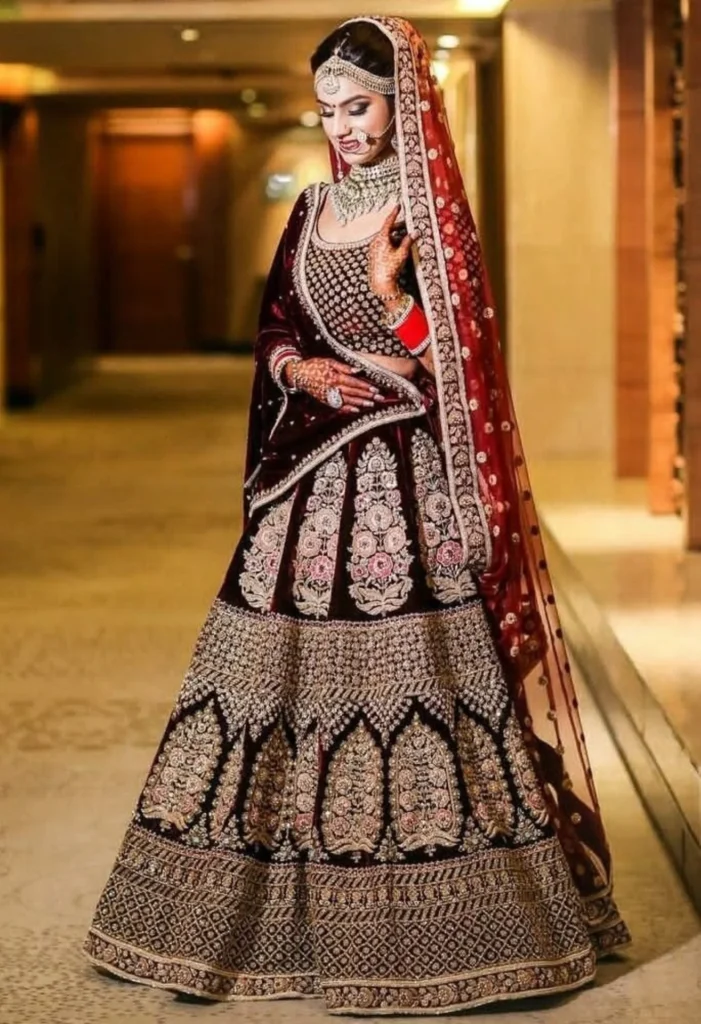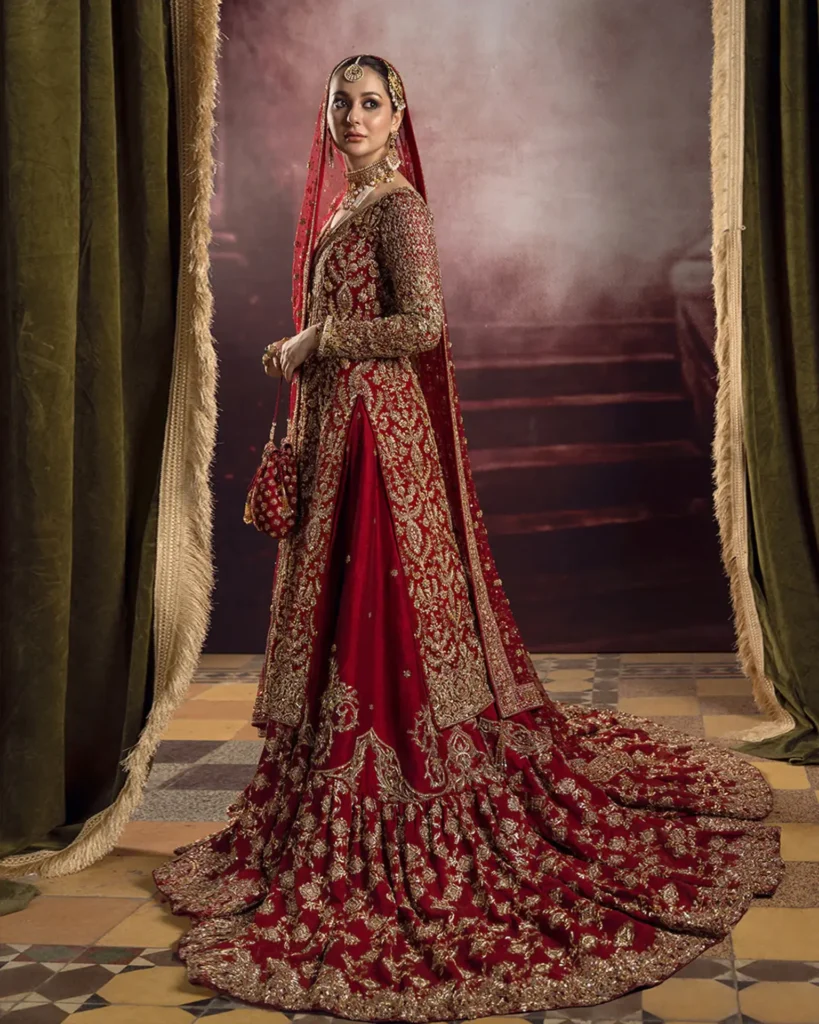When it comes to wedding attire, the bridal lehenga is more than just a dress—it’s a symbol of tradition, elegance, and individuality. Among the vast array of options available, the Pakistani bridal lehenga stands out as a timeless and versatile choice that blends cultural heritage with modern trends. From intricate designs to luxurious fabrics, these lehengas have captured the hearts of brides worldwide.
1. Rich Cultural Heritage
Pakistani bridal lehengas are deeply rooted in cultural traditions, making them a meaningful choice for your wedding. Each design reflects the artistry and craftsmanship passed down through generations. The detailed embroidery, handwoven patterns, and vibrant colors are a testament to Pakistan’s rich textile heritage.

Example: The timeless beauty of Mughal-inspired lehengas, featuring intricate floral and paisley motifs, remains a favorite among brides who want to embrace traditional elegance.
2. Luxurious Fabrics for a Regal Look
One of the hallmarks of a Pakistani bridal lehenga is the use of luxurious fabrics like velvet, silk, organza, and chiffon. These fabrics not only elevate the overall look but also add a sense of comfort and opulence.
- Velvet Lehengas: Perfect for winter weddings, they exude warmth and grandeur.
- Chiffon and Silk: Ideal for summer or spring weddings, these fabrics are lightweight and airy.
Personal Anecdote: I recently attended a wedding where the bride wore a red velvet lehenga with gold zari embroidery. The richness of the fabric made her look regal, and it was the perfect choice for her grand indoor ceremony.
3. Exquisite Embroidery and Detailing

Pakistani bridal lehengas are renowned for their intricate embroidery, which often features zari, zardozi, tilla, and gota work. These embellishments transform the outfit into a work of art. The attention to detail ensures that every lehenga is unique and reflective of the bride’s personality.
Practical Tip: If you’re having a nighttime wedding, opt for a lehenga with sequin or mirror work to shine beautifully under the lights.
4. Versatile Color Palette
While red remains a classic bridal color, Pakistani bridal lehengas offer a wide range of hues to suit every bride’s preferences and wedding theme.

- Traditional Reds and Maroons: Perfect for brides who want to honor cultural traditions.
- Soft Pastels: Shades like blush pink, mint green, and ivory are popular for daytime ceremonies or modern weddings.
- Rich Jewel Tones: Colors like emerald green, navy blue, and deep wine are ideal for evening events.
Example: A friend of mine chose a pastel pink lehenga with silver embroidery for her outdoor nikah ceremony. The soft tones complemented the floral decor beautifully, creating a dreamy look.
5. Unique Silhouettes for Every Body Type
Pakistani bridal lehengas come in a variety of silhouettes, ensuring every bride can find something flattering.
- A-Line Lehenga: A classic silhouette that flares out from the waist, perfect for most body types.
- Fishtail Lehenga: Highlights curves and adds a glamorous touch.
- Gharara and Sharara: Popular Pakistani styles that feature wide-leg pants paired with heavily embellished tops and dupattas.
Pro Tip: If you want a traditional yet comfortable outfit, consider a gharara or sharara for ease of movement during the festivities.
6. Perfect for Both Traditional and Modern Brides

One of the most appealing aspects of Pakistani bridal lehengas is their versatility. They can be styled to suit traditional ceremonies or modern, theme-based weddings.
- For a Traditional Look: Pair your lehenga with heavy Kundan or Polki jewelry, a nose ring, and a double dupatta drape.
- For a Modern Twist: Go for minimalistic jewelry, experiment with a cape-style dupatta, or opt for pastel shades with understated embroidery.
7. Attention to Dupatta Styling
The dupatta is an integral part of a Pakistani bridal lehenga ensemble. Pakistani designers often incorporate intricate embroidery, borders, and even pearl or sequin detailing on the dupatta, making it a statement piece.
Styling Tip: For a royal look, drape your dupatta over your head and let a second, lighter dupatta cascade over your shoulders.
8. Customization Options
One of the best things about choosing a Pakistani bridal lehenga is the scope for customization. Whether you want to modify the color, embroidery, or silhouette, designers offer plenty of options to tailor the lehenga to your liking.
Practical Advice: Start your fittings at least 3–4 months before the wedding to allow enough time for adjustments and final touches.
9. Affordable Elegance
While designer lehengas can be pricey, Pakistani bridal lehengas offer a range of options to suit various budgets. From luxurious high-end designs to affordable semi-formal styles, there’s something for everyone.
Pro Tip: Explore boutique collections or seasonal sales to find a high-quality lehenga at a reasonable price.
10. Timeless Appeal

Pakistani bridal lehengas are not just a fleeting trend; they are timeless pieces that can be cherished for years to come. Their enduring beauty ensures that your wedding photos will look stunning even decades later.
Example: My aunt recently passed down her wedding lehenga to her daughter. The intricate zardozi embroidery and classic red-and-gold combination made it just as relevant today as it was 30 years ago.
Choosing a Pakistani bridal lehenga for your wedding day is more than just a fashion decision—it’s a way to celebrate artistry, tradition, and individuality. From luxurious fabrics to intricate designs, these lehengas offer something truly special for every bride.


